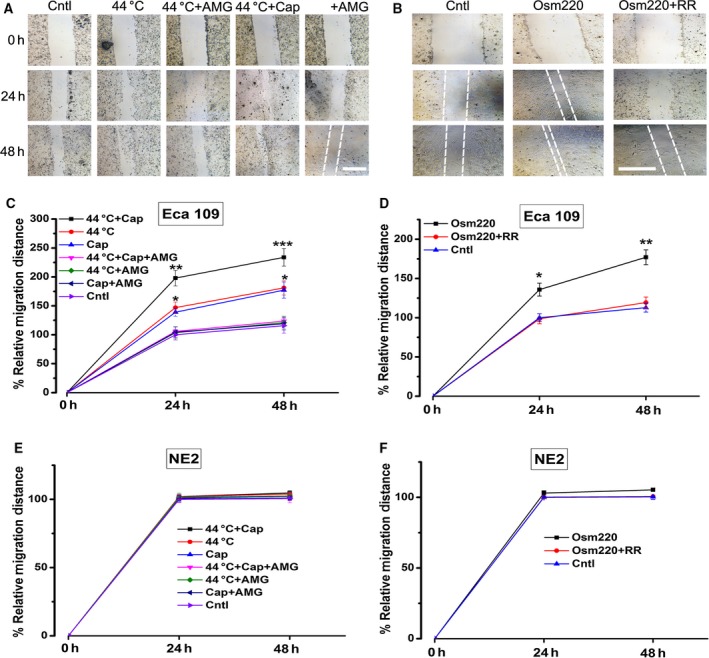Figure 6.

Effects of overactivation of TRPV1 and TRPV4 on the migration of Eca109 and NE2 cells. Cell migration was assessed via a wound healing assay. (A) Representative images of Eca109 cell migration after exposure to capsaicin (15 μm) and/or heat stimulation (44 °C water bath). AMG9810 (10 nm) was used as a TRPV1 antagonist. The white broken lines assisted to define the edging of the wounds. (B) Sample pictures of Eca109 cell migration after recurrently brief exposure to hypotonic medium (220 m Osm). Ruthenium red (RR, 15 μm) was used as a TRPV inhibitor. (C) Eca109 cell migration was promoted substantially by the application of 15 μm capsaicin and/or recurrently brief exposure to heat (44 °C); cell migration was enhanced much greater by the simultaneous treatment with capsaicin and heat stimuli; these effects could be abrogated by AMG9810 (10 nm). (D) Eca109 cell migration was accelerated considerably by recurrently brief exposure to hypotonic medium (220 m Osm); this effect was compromised by ruthenium red (15 μm). (E) NE2 cell migration was not affected by the application of 15 μm capsaicin and/or heat stimulation (44 °C water bath) even up to 17 days. (F) NE2 cell migration was unaffected by recurrently brief exposure to hypotonic medium (220 m Osm) even up to 17 days. Cap, capsaicin; AMG, AMG9810; Osm220, osmotic pressure 220 mm Hg; RR, ruthenium red; Cntl, control. *P < 0.05, **P < 0.01, ***P < 0.001. Bar = 1.0 mm
